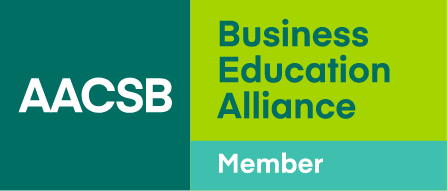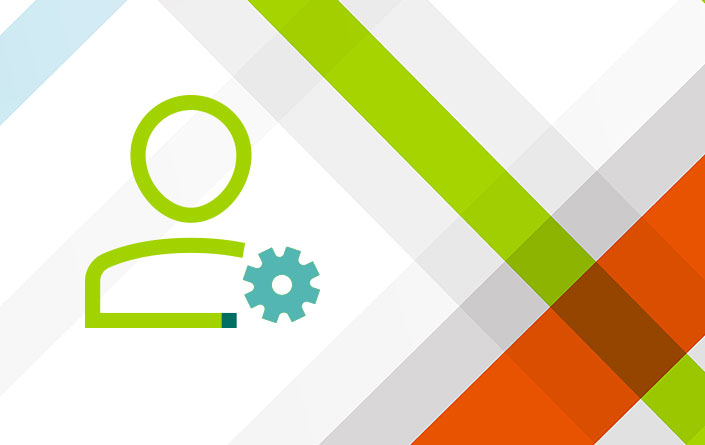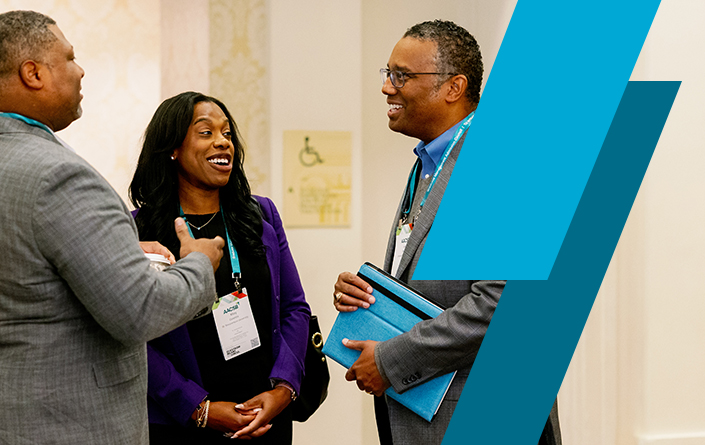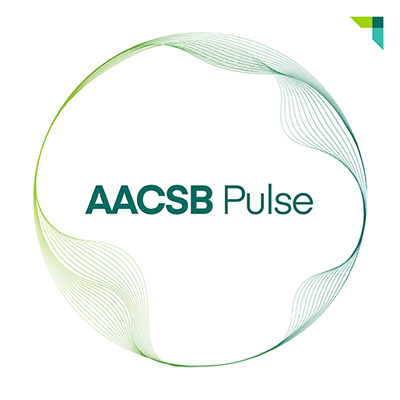Faculty as Partners in Assurance of Learning
Sponsored Content
- Faculty too often see assessment as a compliance task imposed from above and disconnected from the real work happening in classrooms.
- To gain more faculty support for assurance of learning tasks, administrators should provide professional development opportunities as well as tools and resources.
- Getting faculty more involved in AoL tasks is a change management challenge that requires administrators to create a sense of urgency, develop a vision, generate wins, and institutionalize new practices.
A startling 48 percent of faculty don’t believe that assessment provides valuable data, according to a 2024 survey from The Chronicle of Higher Education. This finding highlights a persistent challenge: Even though faculty are best positioned to improve student learning, they often feel disconnected from assessment efforts.
At Peregrine Global Services, an edtech company specializing in teaching and learning solutions for higher education, we often hear clients voice this disconnect. Deans, program chairs, and assessment coordinators want to know how to gain faculty buy-in regarding external assessment tools. These administrators also are looking for practical ways to motivate faculty to participate in assessment activities, data analysis, and continuous improvement efforts, and to guide students through the assessment process.
That said, we have also seen inspiring examples of faculty driving the assessment process, advocating for its value, leading implementation efforts, and collaborating across departments.
To encourage more faculty participation in assessment, we need to shift our thinking. Assessment is often considered a compliance task—window dressing that is only implemented so the school can meet accreditation standards. However, its objective must be to improve teaching and learning. When faculty actively interpret and apply assessment data, it becomes the foundation of the continuous improvement cycle known as assurance of learning (AoL).
Beyond improving academic quality, assessment is essential for accreditation. To achieve AACSB accreditation, institutions must demonstrate that they assess student competencies through direct and indirect measures and use those results to inform decisions and improve outcomes. AACSB also highlights a focus on continuous improvement, which aligns with the inherent nature of assessment.
When embedded into a culture that emphasizes quality, AoL empowers faculty to translate assessment results into action, reassess the impact, and drive meaningful change. Assessment is not about checking boxes. It’s about cultivating academic programs that are relevant, responsive, and rigorously designed to serve students, industry, and society.
So, how do we make faculty partners in AoL and assessment?
The Importance of Faculty Engagement
As the primary designers and facilitators of the curriculum, faculty are uniquely positioned to create meaningful, sustainable assessment practices that improve student learning and continuous program development. Their disciplinary expertise allows them to align learning outcomes with relevant content and competencies. AACSB expects faculty to lead curriculum development in ways that uphold academic rigor and meet stakeholder needs.
When faculty are engaged in AoL—whether they are designing assessments or helping to interpret data and close the loop—the process becomes more authentic, more actionable, and far more impactful. However, several barriers limit faculty participation. By identifying and addressing three of these barriers, school leaders can develop practical strategies to strengthen engagement.
First, faculty may see assessment as something they have to do rather than something that can help them improve teaching and learning. Faculty may believe their course-level assessments are sufficient, but those assessments often aren’t clearly connected to program-level learning outcomes. This is why it’s crucial to ensure that all assessment activities lead holistically to program-level improvements in teaching and learning.
When AoL feels like a top-down requirement that’s disconnected from the real work happening in classrooms, it often results in surface-level participation. If administrators engage faculty in the design and interpretation of assessment, they will foster a culture of quality where instructors feel responsible for student outcomes. When faculty buy into the process, the consistency and reliability of assessment practices will be improved because professors will be more likely to encourage student effort and contribute to refining assessment tools over time.
When faculty are engaged in assurance of learning, the process becomes more authentic, more actionable, and far more impactful.
Second, AoL and assessment efforts take time and coordination. The time commitment can feel like a heavy lift, depending on where a school is in terms of building its processes. Faculty are already stretched thin with responsibilities related to teaching, supervision, research, service, and student support. Administrative leaders must carefully consider how faculty spend their time and how much of it can be devoted to the mission.
Finally, faculty might not have been trained in AoL or assessment design, which can make them more hesitant about participating. This will be especially true if they find the process unclear or disconnected from their teaching philosophies.
These barriers are valid, but they can be overcome. To move faculty from resistance to engagement, school leaders should communicate, plan, and provide the proper support and tools.
This support should include professional development for faculty. Designing rubrics, interpreting assessment data, and knowing how to act on results aren’t intuitive skills. If faculty are to engage meaningfully in AoL, they need to achieve a baseline level of assessment literacy.
Additionally, this support should be relevant, accessible, and timely. Opportunities should align with program needs, respect faculty time, and enable faculty to apply what they’ve learned within the current assessment cycle. When development is targeted and actionable, faculty feel more confident in their role, which leads to greater ownership of AoL and stronger engagement overall.
Professional development opportunities might include hands-on workshops, webinars, or conference sessions focused on practical strategies for designing and using assessments. For instance, AACSB offers an Assessment and AoL Conference, as well as assurance of learning seminars tailored for specific markets.
AoL Through the Lens of Change Management
Leading AoL is ultimately a change management challenge. Faculty aren’t just being asked to do more. They’re also being asked to think differently about their role in student learning, curriculum design, and institutional accountability. Change within any institution is difficult and can fail to take root due to many causes: a lack of buy-in, a lack of understanding, unclear expectations, poor communication, or insufficient leadership support.
If you’re an administrator, you can avoid these pitfalls by structuring a new AoL process using the eight-step model outlined in John Kotter’s book Leading Change:
Step 1: Create a sense of urgency. Faculty are more likely to engage in AoL when they view it as an effort to improve student outcomes rather than as an administrative task to check off for accreditation. Pat Hutchings makes this point in a paper from the National Institute for Learning Outcomes Assessment.
Before you assign new roles and responsibilities, it’s vital that you explain why the process is necessary. Highlight the urgency by presenting information on accreditation standards, recapping current discussions on the value of higher education, and outlining faculty concerns. Then, paint a positive picture of the desired end state, in which your institution has robust assessment systems, uses data for continuous improvement, and can easily show how it delivers on its mission and improves student outcomes.
Step 2: Build a guiding coalition. This is the part where it becomes a team sport. No longer will one or two people shoulder the burden of assessment and institutional effectiveness; you will assemble a team of faculty members, administrators, and perhaps external partners to lead and advocate for the initiative.
Step 3: Develop a vision and strategy. Start with the end in mind. What is the ideal outcome of the initiative? Your vision may include improved curriculum alignment, more systematic assessment, more efficient data analysis processes, or enhanced teaching effectiveness. Whatever your goal, align it with your mission and develop a strategy that takes you toward the vision.
If institutions expect faculty to engage with assessment activities, the process must be as seamless as possible. Technology helps reduce the administrative burden that often deters participation.
Step 4: Communicate the vision. Your guiding coalition of faculty and administrators should then spread the word—in meetings, written communications, workshops, and other contexts. Help faculty see that assessment is not a punitive accountability tool; it is a way of collecting data that celebrates learning achievement while targeting potential gaps. Your goal should be to provide clarity as well as an opportunity for anyone to bring up concerns for open discussion.
Step 5: Empower broad-based action. Provide faculty with all the necessary resources and support for active participation in the process while removing any barriers to engagement. If adjunct faculty will administer program-level assessment, provide details about the tool, and show them how they can help their students. Share results so that all faculty take ownership of the process.
Step 6: Generate short-term wins. These might include successfully implementing a pilot, providing opportunities to benchmark performance, and meeting or exceeding learning outcome goals. Another win could be achieving or maintaining accreditation, which brings a sense of pride and increases the program’s value for current and future students.
Celebrating these successes will illustrate for faculty how assessment helps the program and their students. Therefore, it’s important to show the fruits of your labor. Create a consistent space or platform for communication, whether it’s an email newsletter or an online dashboard. Use it regularly to share updates on the data, outline what changes have been made, and describe what impact those changes have had.
Step 7: Sustain acceleration. Don’t stop with just the early wins, though. Build momentum by using those results to expand quality assurance initiatives; then, gather faculty feedback to refine the processes. Remind faculty how their input has influenced curricular or programmatic changes and show them the resulting impact in the data. Doing so reinforces the message that their voices matter and demonstrates the power of informed decision-making. Quality is always a cycle, so keep your faculty engaged in each iteration.
Step 8: Anchor new approaches in the culture. Finally, after you celebrate early wins and learn from what works and what doesn’t, institutionalize the practices. This means making the assurance of learning process second nature, so it happens by default.
While Kotter’s model may seem daunting, the keys are to start with a vision, involve the right people, and take iterative steps toward creating a culture of sustained excellence.
Streamlined Systems Support Engagement
It is essential for administrators to embed AoL activities, such as assessment, into regular teaching responsibilities and acknowledge them in workload expectations. As Catherine Wehlburg notes in Promoting Integrated and Transformative Assessment, this approach signals to faculty that AoL is not an add-on, but a core part of teaching excellence.
Still, if institutions expect faculty to engage consistently with assessment activities, the process must be as seamless as possible. Technology helps reduce the administrative burden that often deters participation. Assessment management platforms, data dashboards, and automated reporting tools help streamline the process so faculty can focus on using the results.
At Peregrine, our goal is to supply some of these resources. We offer customizable, scalable, cost-effective assessment tools that provide robust data and reporting. We design our tools in collaboration with faculty across institutions to ensure that these tools are valid, relevant, and trustworthy.
In addition, we offer free webinars on the foundations of AoL and the best practices for summative evaluation. For institutions using Peregrine assessments, we also provide training and support at no additional cost. This support includes guidance on how schools can access and use their assessment data.
Our solutions are designed to make AoL more manageable, so faculty spend less time navigating systems and more time making meaningful, data-informed decisions. When assessment is easier to do, it’s easier to prioritize—and faculty are much more likely to stick with it, to the benefit of all.






